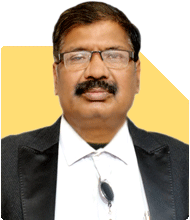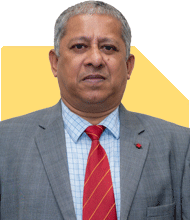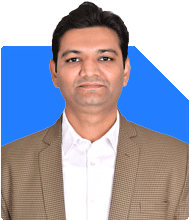37 with no savings: How much should I save for retirement at 55?
Ramalingam Kalirajan |8027 Answers |Ask -Follow
Mutual Funds, Financial Planning Expert - Answered on Jan 22, 2025
He has an MBA in finance from the University of Madras and is a certified financial planner.
He is the director and chief financial planner at Holistic Investment, a Chennai-based firm that offers financial planning and wealth management advice.... more
My age is 37 years but I have no savings my income is 1.10lakh per month and spending is 35000how much amount of money I need to save in a month and where I need to save to get retirement at age 55
Monthly expenses are Rs. 35,000, leaving Rs. 75,000 as surplus.
There are no savings currently, which means you need to start from scratch.
Retirement at age 55 leaves 18 years for financial planning.
Set Your Retirement Goal
Decide your retirement corpus based on lifestyle needs.
Consider inflation and plan for 30+ years post-retirement.
Assume monthly expenses of Rs. 35,000 today. Adjust them for inflation.
A Certified Financial Planner can help calculate your retirement corpus.
Determine Savings Target
Start saving at least 50-60% of your surplus.
Target saving Rs. 50,000 to Rs. 60,000 monthly consistently.
Increase savings as your income grows in the future.
Early and disciplined saving will ease the burden later.
Create a Diversified Investment Portfolio
Equity Mutual Funds
Equity mutual funds offer long-term growth.
Invest 70% of savings here for higher returns.
Choose actively managed funds for wealth creation.
Invest regularly through monthly SIPs.
Debt Mutual Funds
Allocate 20% of savings to debt mutual funds.
These funds ensure stability and lower risk.
Use them for medium-term goals and rebalancing.
Public Provident Fund (PPF)
Invest 10% of savings in PPF for tax-free returns.
PPF is a secure, long-term investment option.
Regular Review and Rebalancing
Review your portfolio yearly to track progress.
Rebalance investments to maintain equity and debt ratio.
Adjust for changing income, expenses, and market conditions.
Emergency Fund and Insurance
Build an emergency fund with 6 months of expenses.
Keep this fund in liquid instruments like FDs or savings accounts.
Get adequate health and term insurance coverage.
Avoid Common Mistakes
Do not invest in real estate for retirement planning.
Avoid ULIPs or investment-cum-insurance policies.
Focus on investments aligned with your goals.
Tax Efficiency in Investments
Use tax-saving instruments under Section 80C.
Stay updated on mutual fund capital gains taxation.
Use the guidance of a Certified Financial Planner for tax planning.
Final Insights
Start saving Rs. 50,000-60,000 monthly immediately.
Invest in equity, debt, and PPF for diversification.
Review and adjust your plan regularly for better results.
Stay disciplined and focus on long-term goals for retirement at 55.
Best Regards,
K. Ramalingam, MBA, CFP,
Chief Financial Planner,
www.holisticinvestment.in
https://www.youtube.com/@HolisticInvestment
You may like to see similar questions and answers below
Ramalingam Kalirajan |8027 Answers |Ask -Follow
Mutual Funds, Financial Planning Expert - Answered on Apr 17, 2024
Sunil Lala | Answer |Ask -Follow
Financial Planner - Answered on May 04, 2024
Ramalingam Kalirajan |8027 Answers |Ask -Follow
Mutual Funds, Financial Planning Expert - Answered on Jun 25, 2024
Ramalingam Kalirajan |8027 Answers |Ask -Follow
Mutual Funds, Financial Planning Expert - Answered on Jun 30, 2024
Rajesh Kumar Singh |96 Answers |Ask -Follow
IIT-JEE, GATE Expert - Answered on Feb 22, 2025
Rajesh Kumar Singh |96 Answers |Ask -Follow
IIT-JEE, GATE Expert - Answered on Feb 22, 2025
Prof Suvasish Mukhopadhyay |397 Answers |Ask -Follow
Career Counsellor - Answered on Feb 22, 2025
Radheshyam Zanwar |1236 Answers |Ask -Follow
MHT-CET, IIT-JEE, NEET-UG Expert - Answered on Feb 22, 2025
Vipul Bhavsar |26 Answers |Ask -Follow
Tax Expert - Answered on Feb 22, 2025
Radheshyam Zanwar |1236 Answers |Ask -Follow
MHT-CET, IIT-JEE, NEET-UG Expert - Answered on Feb 22, 2025
Mayank Chandel |2037 Answers |Ask -Follow
IIT-JEE, NEET-UG, SAT, CLAT, CA, CS Exam Expert - Answered on Feb 22, 2025
Radheshyam Zanwar |1236 Answers |Ask -Follow
MHT-CET, IIT-JEE, NEET-UG Expert - Answered on Feb 22, 2025
Mayank Chandel |2037 Answers |Ask -Follow
IIT-JEE, NEET-UG, SAT, CLAT, CA, CS Exam Expert - Answered on Feb 22, 2025
Mayank Chandel |2037 Answers |Ask -Follow
IIT-JEE, NEET-UG, SAT, CLAT, CA, CS Exam Expert - Answered on Feb 22, 2025









.jpg)












